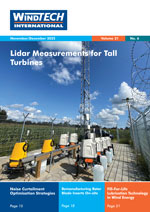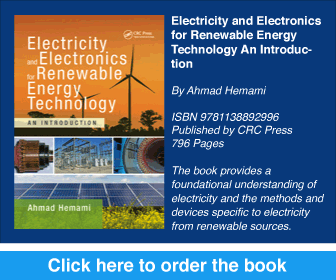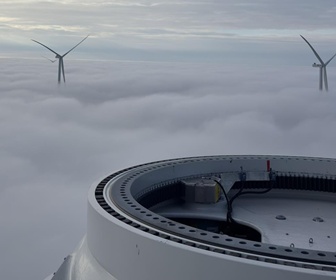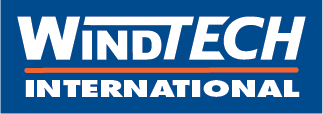- Category: Articles
Their Use in Key Areas of Turbine Operation
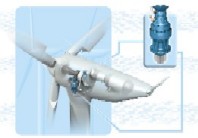 In order to achieve their design potential as credible alternative providers of energy, wind turbine systems have to employ highly efficient, reliable and robust components. Among the most important of these components are gearboxes; in particular, planetary gearboxes. One of the manufacturers of planetary gearboxes is Brevini. This article describes the company’s activities within this field.
In order to achieve their design potential as credible alternative providers of energy, wind turbine systems have to employ highly efficient, reliable and robust components. Among the most important of these components are gearboxes; in particular, planetary gearboxes. One of the manufacturers of planetary gearboxes is Brevini. This article describes the company’s activities within this field.
By Luca Bortolani, Technical Communication and Web Marketing Manager, Brevini Riduttori, Italy
.
 In order to achieve their design potential as credible alternative providers of energy, wind turbine systems have to employ highly efficient, reliable and robust components. Among the most important of these components are gearboxes; in particular, planetary gearboxes. One of the manufacturers of planetary gearboxes is Brevini. This article describes the company’s activities within this field.
In order to achieve their design potential as credible alternative providers of energy, wind turbine systems have to employ highly efficient, reliable and robust components. Among the most important of these components are gearboxes; in particular, planetary gearboxes. One of the manufacturers of planetary gearboxes is Brevini. This article describes the company’s activities within this field.By Luca Bortolani, Technical Communication and Web Marketing Manager, Brevini Riduttori, Italy
- Category: Articles
Targets and Benefits
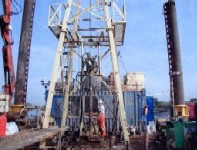 Time and cost benefits can be achieved by the imaginative use of a broad range of services for geotechnical and geophysical data gathering for offshore wind farm sites. Today, there is a comprehensive range of services available to acquire engineering data for the planning, installation and post-construction monitoring of offshore wind farm structures. Applied systematically, each stage of investigation will add to the understanding of the ground model for the site and will help to fine-tune and target the requirements for any subsequent investigations.
Time and cost benefits can be achieved by the imaginative use of a broad range of services for geotechnical and geophysical data gathering for offshore wind farm sites. Today, there is a comprehensive range of services available to acquire engineering data for the planning, installation and post-construction monitoring of offshore wind farm structures. Applied systematically, each stage of investigation will add to the understanding of the ground model for the site and will help to fine-tune and target the requirements for any subsequent investigations.
By Tony Hodgson, Project Manager, Fugro Engineering Services and Ed Cookson, Heathrow Communications, UK
.
 Time and cost benefits can be achieved by the imaginative use of a broad range of services for geotechnical and geophysical data gathering for offshore wind farm sites. Today, there is a comprehensive range of services available to acquire engineering data for the planning, installation and post-construction monitoring of offshore wind farm structures. Applied systematically, each stage of investigation will add to the understanding of the ground model for the site and will help to fine-tune and target the requirements for any subsequent investigations.
Time and cost benefits can be achieved by the imaginative use of a broad range of services for geotechnical and geophysical data gathering for offshore wind farm sites. Today, there is a comprehensive range of services available to acquire engineering data for the planning, installation and post-construction monitoring of offshore wind farm structures. Applied systematically, each stage of investigation will add to the understanding of the ground model for the site and will help to fine-tune and target the requirements for any subsequent investigations.By Tony Hodgson, Project Manager, Fugro Engineering Services and Ed Cookson, Heathrow Communications, UK
- Category: Articles
A Future Market for Turbines from Repowering Projects
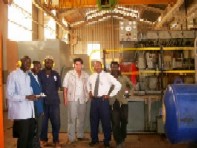 In Central Europe an increasing number of used wind turbines are becoming available at attractive prices following repowering projects. In Europe it is difficult to reinstall these turbines because they require a lot of space and this is the main bottleneck for further expansion of wind energy. A solution could be to export these wind turbines to developing countries so that the energy produced could substitute for diesel fuel. This would decrease the dependence of these countries on more and more expensive fuel imports. Lahmeyer International has undertaken a feasibility study for a wind–diesel system, and a summary is presented in this article.
In Central Europe an increasing number of used wind turbines are becoming available at attractive prices following repowering projects. In Europe it is difficult to reinstall these turbines because they require a lot of space and this is the main bottleneck for further expansion of wind energy. A solution could be to export these wind turbines to developing countries so that the energy produced could substitute for diesel fuel. This would decrease the dependence of these countries on more and more expensive fuel imports. Lahmeyer International has undertaken a feasibility study for a wind–diesel system, and a summary is presented in this article.
By Bungo Ezawa, Head of Department Renewable Energies – Wind Energy, Lahmeyer International, Germany In Central Europe an increasing number of used wind turbines are becoming available at attractive prices following repowering projects. In Europe it is difficult to reinstall these turbines because they require a lot of space and this is the main bottleneck for further expansion of wind energy. A solution could be to export these wind turbines to developing countries so that the energy produced could substitute for diesel fuel. This would decrease the dependence of these countries on more and more expensive fuel imports. Lahmeyer International has undertaken a feasibility study for a wind–diesel system, and a summary is presented in this article.
In Central Europe an increasing number of used wind turbines are becoming available at attractive prices following repowering projects. In Europe it is difficult to reinstall these turbines because they require a lot of space and this is the main bottleneck for further expansion of wind energy. A solution could be to export these wind turbines to developing countries so that the energy produced could substitute for diesel fuel. This would decrease the dependence of these countries on more and more expensive fuel imports. Lahmeyer International has undertaken a feasibility study for a wind–diesel system, and a summary is presented in this article.- Category: Articles
The Research and Engineering Involved in Confidently Achieving 70m Monitoring
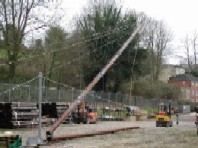 As the height of wind turbines continues to soar, it has become increasingly necessary to achieve ‘bankable data’ from wind monitoring sensors at higher levels. Potential wind development sites are often remote, so monitoring masts need to be easily transported, lightweight and possible to construct with minimal effort. For masts in excess of 60m to survive extreme conditions, the tower sections must have greater strength without excessively compromising the mast weight. In this article, Geoff Watson of Western Windpower describes the development programme for the company’s new 70m HiMast.
As the height of wind turbines continues to soar, it has become increasingly necessary to achieve ‘bankable data’ from wind monitoring sensors at higher levels. Potential wind development sites are often remote, so monitoring masts need to be easily transported, lightweight and possible to construct with minimal effort. For masts in excess of 60m to survive extreme conditions, the tower sections must have greater strength without excessively compromising the mast weight. In this article, Geoff Watson of Western Windpower describes the development programme for the company’s new 70m HiMast.
.
 As the height of wind turbines continues to soar, it has become increasingly necessary to achieve ‘bankable data’ from wind monitoring sensors at higher levels. Potential wind development sites are often remote, so monitoring masts need to be easily transported, lightweight and possible to construct with minimal effort. For masts in excess of 60m to survive extreme conditions, the tower sections must have greater strength without excessively compromising the mast weight. In this article, Geoff Watson of Western Windpower describes the development programme for the company’s new 70m HiMast.
As the height of wind turbines continues to soar, it has become increasingly necessary to achieve ‘bankable data’ from wind monitoring sensors at higher levels. Potential wind development sites are often remote, so monitoring masts need to be easily transported, lightweight and possible to construct with minimal effort. For masts in excess of 60m to survive extreme conditions, the tower sections must have greater strength without excessively compromising the mast weight. In this article, Geoff Watson of Western Windpower describes the development programme for the company’s new 70m HiMast.By Dr Geoff Watson, Business Manager, Western Windpower Ltd, UK
- Category: Articles
Valuable Data for the Wind Power Industry
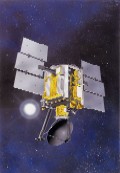 Research at the National Aeronautics and Space Administration’s (NASA’s) Earth Science Enterprise is complementing the development of offshore wind power in the USA. The American space agency is experimenting with a new technology to measure surface-level sea winds from orbit. Created for monitoring marine weather conditions in general, this technique could evolve into an operational system that would supply valuable data to the wind power industry. Not surprisingly, a high vantage point may offer the best view for offshore wind information.
Research at the National Aeronautics and Space Administration’s (NASA’s) Earth Science Enterprise is complementing the development of offshore wind power in the USA. The American space agency is experimenting with a new technology to measure surface-level sea winds from orbit. Created for monitoring marine weather conditions in general, this technique could evolve into an operational system that would supply valuable data to the wind power industry. Not surprisingly, a high vantage point may offer the best view for offshore wind information.By Avery Sen, Policy Analyst and ORISE Fellow, National Oceanic and Atmospheric Administration
- Category: Articles
Development of a Methodology for Wind Resource Assessment
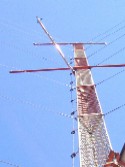 Since 1995, COPEL (the local utility of the State of Paraná, Brazil) has been developing, in partnership with LACTEC and CAMARGO SCHUBERT, research and development projects in the area of wind energy. In 1999, the project named ‘Projeto VENTAR’ introduced the ‘Wind energy resource map of the State of Paraná’. In line with the global growth of renewable energy utilisation, and the beginning of the Brazilian wind energy market, COPEL has developed a methodology to support feasibility analyses of wind farm projects in Brazil. The author gives a description of the methodology and results achieved.
Since 1995, COPEL (the local utility of the State of Paraná, Brazil) has been developing, in partnership with LACTEC and CAMARGO SCHUBERT, research and development projects in the area of wind energy. In 1999, the project named ‘Projeto VENTAR’ introduced the ‘Wind energy resource map of the State of Paraná’. In line with the global growth of renewable energy utilisation, and the beginning of the Brazilian wind energy market, COPEL has developed a methodology to support feasibility analyses of wind farm projects in Brazil. The author gives a description of the methodology and results achieved.
By Luiz Procopiak, LACTEC, Brazil
.
 Since 1995, COPEL (the local utility of the State of Paraná, Brazil) has been developing, in partnership with LACTEC and CAMARGO SCHUBERT, research and development projects in the area of wind energy. In 1999, the project named ‘Projeto VENTAR’ introduced the ‘Wind energy resource map of the State of Paraná’. In line with the global growth of renewable energy utilisation, and the beginning of the Brazilian wind energy market, COPEL has developed a methodology to support feasibility analyses of wind farm projects in Brazil. The author gives a description of the methodology and results achieved.
Since 1995, COPEL (the local utility of the State of Paraná, Brazil) has been developing, in partnership with LACTEC and CAMARGO SCHUBERT, research and development projects in the area of wind energy. In 1999, the project named ‘Projeto VENTAR’ introduced the ‘Wind energy resource map of the State of Paraná’. In line with the global growth of renewable energy utilisation, and the beginning of the Brazilian wind energy market, COPEL has developed a methodology to support feasibility analyses of wind farm projects in Brazil. The author gives a description of the methodology and results achieved.By Luiz Procopiak, LACTEC, Brazil
- Optimising Wind Energy Capture
- Safety and Fire Behaviour
- Improving Bankability of Wind Power Projects
- Offshore Wind Turbine Foundations
- Wind Speed at Light Speed
- New Zealand’s Winds Harnessed
- Offshore Wind Farm Construction
- Comparing Models for Energy Output Estimation
- Sensors for Today’s Turbines
- Lubricant and Debris Analysis for Wind Turbines
- Electrical Transmission System for Offshore Wind Farms
- Carbon Credits and Wind Power
- Wind Energy Condition-Based Monitoring
- Offshore Wind Energy and UK Law
- Next-Generation Capacitors
- Scira Offshore Energy
- An Integrated Monitoring System for Offshore Wind Farms



